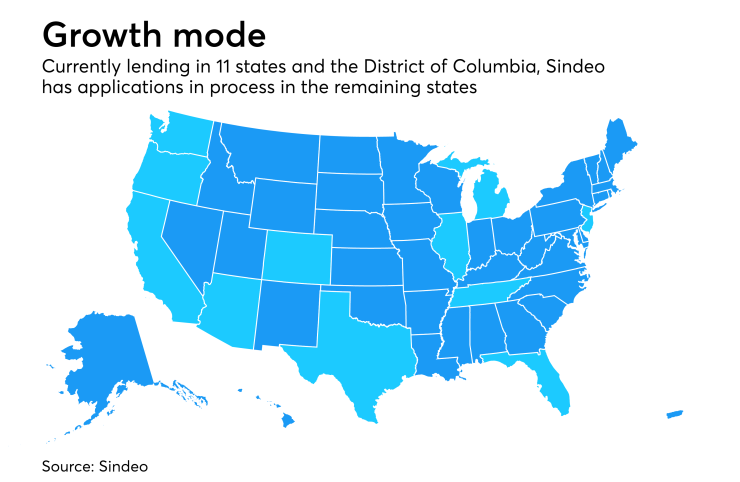After
The San Francisco-based fintech is instead changing its technology approach by relying on its new owners for development and engineering support — key assets that Sindeo uses to differentiate itself.
Sindeo's business plan for 2017 included geographic expansion and doing more consumer-direct business, but it was predicated on an expected capital raise. So when a $40 million round of venture funding fell through at the last minute, Sindeo all but shut down this summer.
"We thought we were closing a big round of financing and we were all engines ahead in the first quarter," founder and CEO Nick Stamos said during an exclusive interview with NMN. "We believe in the business model and the vision and value proposition. What happened was that our funding went away at the last minute."
Sindeo
By working with so many partners, Sindeo's administrative costs are higher than most mortgage brokers. So while that could be an area to trim costs, the concept of a "transparent one-stop marketplace," that offers consumers a wide range of loan choices is central to Sindeo's model, said Stamos.
"Our plan was always bringing in more capital because we're still in a growth and investment phase," he said.

Sindeo started the year with between $5 million and $6 million in the bank.
It expected to raise $30 million to $40 million through a Series C round of funding in the second quarter. "We were very much in an investment mode and in a growth mode on all levels."
The investor — who Stamos said he could not name — backed out on June 16. Sindeo had about $1 million in the bank at that time.
"In hindsight, had we known the financing was at risk, we would have been a little bit more cautious and prudent" with its spending, he said.
With the worst-case scenario of being unable to find a replacement investor, Stamos made the decision on June 20 to cut staff and stop taking new loan applications, "based on the responsibilities that I have as a CEO to make sure we are in the position to pay our employees, as well close on our pipeline." Sindeo never fully shut down, he added.
That same day, Stamos told Sindeo's board if a new investor didn't come in or an existing one step up by June 30, the company would have to file for bankruptcy.
"I thought that was probably a 50% shot that was going to happen. We had about 10 days to figure out financing for the business. Hopefully someone would step in and essentially that is what happened," he said.

Sindeo received offer sheets from several different companies, according to Stamos. On July 3,
Renren is publicly traded on the New York Stock Exchange and runs a social media network in China.
It also makes investments in other companies and was no stranger to the U.S. housing market, with equity stakes in
Renren also owns Chime, a U.S.-based company that provides real estate agents with lead generation, internet data exchange websites (which are used to display multiple listing services information) and customer relationship management services.
"We felt a lot of synergies between the business models. Chime is selling to real estate agents, helping them run their business," said Matthew Murphy, Renren's vice president of global marketing.
As a mortgage broker, unlike SoFi and LendingHome, Sindeo "really aligned well with the target audience that we were going after with Chime, agents that need a lender partner that has a diverse set of products to work with to help with their consumers," Murphy said.
"In hindsight, had we known the financing was at risk, we would have been a little bit more cautious and prudent."
— Nick Stamos, CEO, Sindeo
Under Renren's ownership, Sindeo needs "significantly less [capital] because we're a much smaller organization and we're building again. So we're definitely not going to be burning at the levels we were," said Stamos.
Before June 20, Sindeo was a 70-person organization with 20 people working on technology. Now, it leverages Renren's infrastructure and resources on the technology and engineering side.
Sindeo has mortgage broker and/or mortgage banker licenses in 12 states: Arizona, California, Colorado, Florida, Illinois, Michigan, New Jersey, Oregon, Tennessee, Texas and Washington, as well as the District of Columbia.
With Renren's support, Sindeo submitted licensing applications in the remaining states.
After June 20, it was down to seven people (with just one loan officer) on staff; now Sindeo is back above 20 (with seven originators), Stamos said. A year from now it wants to have more than 100 employees.
He spent much of July explaining to Sindeo's wholesalers what had transpired and getting them familiar with Renren. Most of those lenders are still part of Sindeo's network and he expects to have more lenders on board next year.
And as Sindeo adds more people and gets approved in additional states, it will start growing its direct-to-consumer business again, Stamos said.





